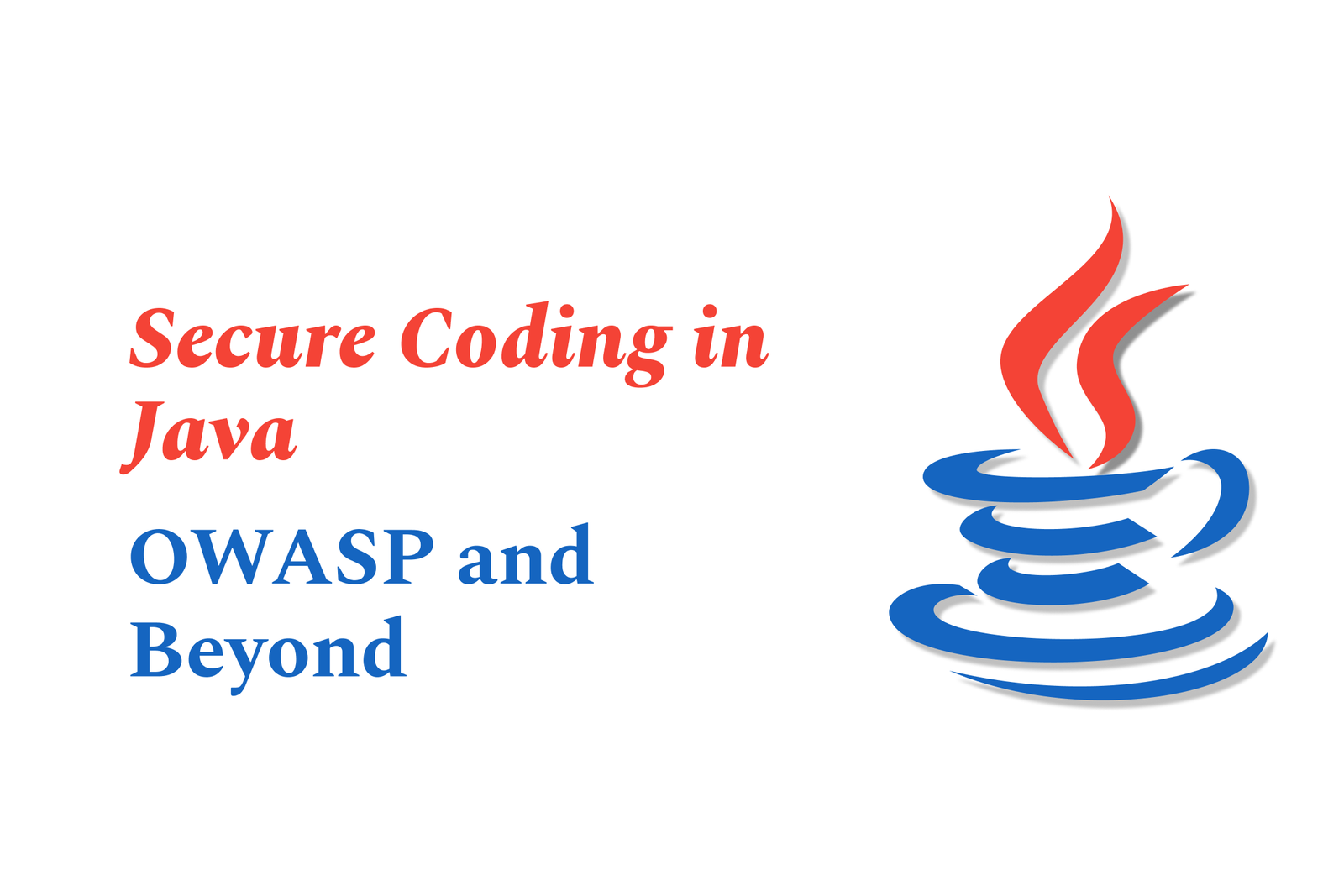Secure Coding in Java: owasp and beyond
Secure coding in Java involves applying best practices and guidelines, including OWASP Top 10 awareness, to prevent vulnerabilities like injection and data exposure. Beyond OWASP, it emphasizes secure object handling, input validation, and access control to build robust, safe Java applications.
Secure Coding in Java: OWASP and Beyond
1 ) Introduction to Secure Coding in Java
Java offers built in security mechanisms designed to protect against hostile or unsafe code. However, developers must adhere to secure coding best practices to prevent vulnerabilities and ensure robust application security. Even with Java's protective features, improper coding can inadvertently introduce security holes.
2 ) OWASP Top 10 Vulnerabilities Awareness
Understanding and mitigating the OWASP Top 10 common web application vulnerabilities is vital. These include Injection flaws, Broken Authentication, Sensitive Data Exposure, and others relevant to Java based web applications. Preparing for secure code review and interviews often involves familiarity with these vulnerabilities.
3 ) Java Secure Coding Guidelines Overview
Oracle’s Secure Coding Guidelines for Java SE emphasize critical areas for security:
Denial of Service: Avoid resource exhaustion and performance degradation.
Confidential Information: Protect data privacy by controlling information leakage and safe data handling.
Injection and Inclusion: Prevent attacks like SQL injection by validating and sanitizing input.
Accessibility and Extensibility: Design code that safeguards against unauthorized access while maintaining flexibility.
Input Validation: Ensure strict validation to prevent malicious inputs.
Mutability: Handle object state securely to prevent unintended modifications.
Object Construction: Safely instantiate objects to prevent security flaws.
Serialization and Deserialization: Validate serialized data to prevent insecure object binding.
Access Control: Implement fine grained control to restrict unauthorized operations.
4 ) Resources for Learning and Applying Secure Coding Practices
Developers preparing for secure code reviews, especially in Java environments, can leverage resources such as:
OWASP Cheat Sheet Series on topics like Cross Site Scripting (XSS) prevention, Authentication, Authorization, and Input Validation.
OWASP Proactive Controls which offer defensive coding guidelines.
Official Oracle Java Secure Coding Guidelines documentation (latest version June 2025 ).
Community forums and repositories focusing on secure Java development and vulnerability mitigations.
5 ) Importance of Continuous Learning and Application
Security is a constantly evolving domain; developers should stay updated with the latest vulnerability patterns and coding best practices. Regular review of OWASP materials, official guidelines, secure coding standards, and practical code audits are essential to maintaining high security posture in Java applications.
Summary:
Secure coding in Java involves adherence to best practices beyond Java’s default security features. By focusing on OWASP Top 10 vulnerabilities, following Oracle’s comprehensive secure coding guidelines, and leveraging dedicated resources such as OWASP Cheat Sheets and Proactive Controls, developers can build resilient and secure Java applications. Continuous education and secure code reviews play a critical role in preventing common web application threats.
https://justacademy.in/news-detail/react-native?s-new-push-notification-features-you-must-try
https://justacademy.in/news-detail/what-ios-19-means-for-augmented-reality-developers
https://justacademy.in/news-detail/react-native-performance:-new-optimization-tips
https://justacademy.in/news-detail/the-surprising-benefits-of-react-native-in-education-apps
https://justacademy.in/news-detail/android-apps-leveraging-machine-learning
Related Posts
In 2025, top Angular libraries offer modern, feature-rich components and tools for building dynamic web apps. From powerful data grids to low-code platforms like UI Bakery, these libraries enhance development speed, UI design, and scalability, making them essential for Angular developers.
Migrating from AngularJS to Angular 17 involves gradually upgrading your app by running both frameworks together using tools like ngUpgrade, rewriting components in TypeScript, and adopting Angular’s modern architecture to enhance performance, maintainability, and long-term support.
Angular state management tools help organize and handle app data efficiently, improving scalability and maintainability. Popular options include NgRx for robust, RxJS-based patterns, and newer Signal Store solutions that offer simpler, reactive approaches integrated tightly with Angular’s latest features.
RxJS in Angular empowers developers to manage asynchronous data streams with powerful operators like `forkJoin`, `combineLatest`, and `zip`. Mastering these key operators in 2025 is essential for building efficient, reactive applications that handle complex event sequences seamlessly.
Angular performance optimization in 2025 focuses on improving app speed and responsiveness by using techniques like OnPush change detection, lazy loading, efficient data caching, and AOT compilation. These practices reduce load times, enhance user experience, and ensure scalable, fast Angular applications.
In 2025, Angular remains preferred for large-scale, enterprise apps with its robust, all-in-one framework, while Vue attracts developers seeking simplicity and fast development for smaller projects. Both frameworks excel, with choice driven by project needs and team expertise.
Angular Signals are a new reactive primitive in Angular 16 that enable fine-grained, efficient change detection by automatically tracking dependencies and updating only affected parts of the UI. They simplify state management and boost app performance, revolutionizing Angular's reactivity model.
Angular interview questions to prepare in 2025 focus on core concepts like components, directives, data binding, routing, and dependency injection, along with TypeScript mastery and latest Angular features to ensure strong practical knowledge for building scalable, efficient web applications.
AngularJS reached its official end of support in January 2022, meaning no further updates or security patches. To ensure app security and performance, developers should consider migrating to modern Angular versions or seek third-party long-term support options if immediate migration isn’t possible.
The Angular Roadmap 2025 highlights upcoming features focused on improving developer experience and performance, including zoneless Angular, Signals integration, enhanced Forms, async data handling, improved HMR, and expanded Angular Material/CDK enhancements, driving modern, efficient web app development.










